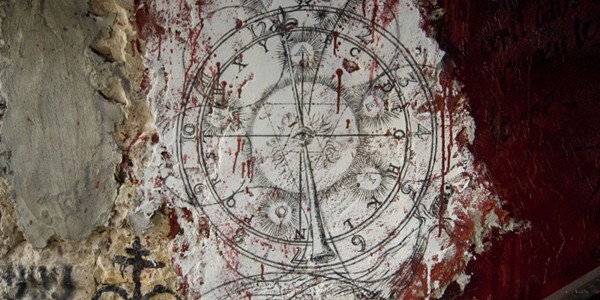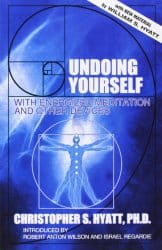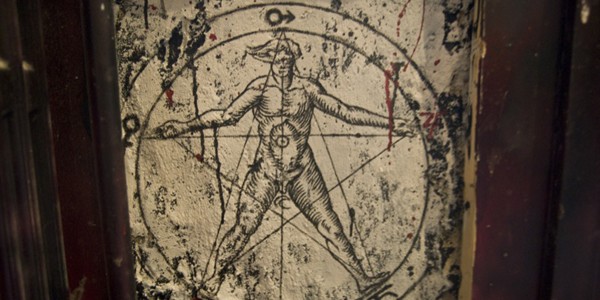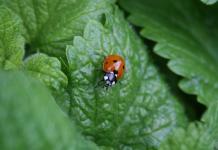
 I first heard about the Paracelsus College through Christopher Hyatt‘s book, Undoing Yourself with Energized Meditation and Other Devices. In one of the appendices, a former student at the Paracelsus College talks about his experience with physical or practical alchemy.1 Prior to that, I had read a little bit about spiritual takes on alchemical symbolism, but I had no idea that there was anyone still doing it as a physical laboratory exercise. I was taken with the idea; I wanted to see what it was about and see what strange things I might be able to accomplish with it. After all, the author of that article claimed to have spent a lot of time on the “water work,” creating life. This and other accounts talked about extracting substances from metals that should not exist, and also of the creation of various “stones” with very strange properties.
I first heard about the Paracelsus College through Christopher Hyatt‘s book, Undoing Yourself with Energized Meditation and Other Devices. In one of the appendices, a former student at the Paracelsus College talks about his experience with physical or practical alchemy.1 Prior to that, I had read a little bit about spiritual takes on alchemical symbolism, but I had no idea that there was anyone still doing it as a physical laboratory exercise. I was taken with the idea; I wanted to see what it was about and see what strange things I might be able to accomplish with it. After all, the author of that article claimed to have spent a lot of time on the “water work,” creating life. This and other accounts talked about extracting substances from metals that should not exist, and also of the creation of various “stones” with very strange properties.
To give some background, the Paracelsus College was initially set up in the USA by someone known as Frater Albertus (Dr. Albert Richard Riedel). According to accounts of the College, it was a general occult school, not just dealing physical alchemy, but also teaching kabbalah and other occult symbolism and technique. Notably, I have heard that it was responsible for changing Israel Regardie‘s take on alchemy, which had previously been of the “it’s all purely spiritual symbolism” school popularized by Carl Jung. The College opened in the USA in 1980 (having operated prior to this for some time as the Paracelsus Research Society), though it closed there after Frater Albertus’ death in 1984. However, in 1982, the Paracelsus College also opened in Australia.2 And this one still operates. As a side note, I have had some contact with practical alchemists in the North America also, and I believe that the art continues to be taught in a number of different contexts.
So, after a few years of having this in the back of my mind, I eventually came to a juncture that seemed like the right time to go ahead and take the plunge, and I enrolled for the College’s Prima course, which covers the herbal work. The work for Prima is intended to take one year, after which the second year (Secunda) is spent in the mineral work (think metals), and finally the third year (Tertia) covers the animal kingdom. After these three years, students might go in their own direction and undertake their own more advanced projects.
The Prima training takes place over one week, after which students may go home and apply what they learned individually. Each day of Prima was fairly packed, including time learning theory and a good deal of hands-on practical work in the on-site lab. There was also time spent identifying and working with certain common or readily available plants which could be useful. At the end of one week, I had a notebook full of notes on laboratory setup, plants and their planetary attributions, kabbalistic and alchemical correspondences, alchemical symbols with their meanings, and notes on how to make certain substances with any given plant subject.

After getting home, it took me some time to put together all of the necessary equipment. I was on quite a budget, so had to try to be resourceful where I could, though I’m not sure how well-advised some of my improvisations were. For example, shaped heating devices are often used to heat round-bottom flasks. This is to make sure that heat is relatively evenly distributed across the glass, which has at least two benefits. Firstly, it helps prevent certain parts of whatever you are working with from being over-heated. To give a basic example of when this might be important, if you’re distilling alcohol, it generally turns to vapour at around 80 C, whereas water obviously boils at around 100 C, though it will evaporate somewhat at room temperature and that will happen more at higher temperatures. If the end product you need is pure alcohol, then an uneven temperature might undermine your efforts by evaporating or even outright boiling some of the water along with the alcohol, thus keeping the water and alcohol mixed. Secondly, in extreme cases, sudden large temperature differences across the glass can cause it to crack. Though I had been warned, I observed this first-hand once due to my own bone-headedness.
In an effort to save some money, I simply used a hot plate, a pot, and some sand (i.e., a sandbath) to try to get an even heat distribution. The downside of this was that the sand took a while to heat up and was not very rapidly responsive to any attempts to change the temperature, so many things took quite a bit longer to do than they would have otherwise. Apart from the nuisance, it was also a bit of a waste of power; and also because I had no idea what I was doing, I got the wrong sand initially, which was messy and could have ruined my glassware. All this is to say that at the College, I learned in a lab that was already set up, but when I was on my own, I had to figure out some pretty basic stuff for myself, and I stumbled in various ways throughout the process.
Nevertheless, I did eventually manage to have a setup that worked well enough to make everything I needed to go through with their self-initiation process. What was that like? Well, I would say that the effects were quite varied. For example, one tincture that I made early on, from an herb that corresponded with the moon in their system, “matured” at one stage and was a bit more potent than most of the other things I made. This potency still amounted to relatively subtle effects in my case. I did not have radical sudden changes, but I did feel a kind of gentle clearing taking place. I also noticed that my mind would subtly drift toward different kinds of things when working with different herbs. Over time, this has shifted for me almost into a different way of bringing in planetary energy. Would I like a bit more ego strength and drive of purpose for the next couple of days? Then I might make use of something from a solar herb.
Although this type of planetary correspondence when working with herbs is not exclusive to this branch of alchemy (herbal spagyrics), one thing that practical alchemy brings to the table is a process of ever-increasing refinement over time, so that whatever has been made can become increasingly potent by repetition of certain processes. Ultimately, this refinement can culminate into the production of what’s known as a stone. No doubt many people will have heard of the famous philosopher’s stone. Well, it turns out that there are also herbal stones, amongst others. The creation of a stone, even a plant stone, is usually considered something of an achievement.
All of this may still sound like a far cry from alchemy’s reputation of having somewhat magical effects, such as turning base metals into gold. I cannot vouch from personal experience for some of the more fantastical results which have been reported from serious practitioners, but I can say that I am willing to give many of the accounts that I have heard the benefit of the doubt. Perhaps a plant stone really can separate any other plant into its three alchemical constituents; perhaps certain substances have been able to cure conditions which modern medicine has not; perhaps certain alchemical operations have been able to produce strange forms of life; and perhaps deep forms of spiritual progress are possible through the transmutation of various substances; no doubt amongst other things. Whether the rabbit hole does indeed go that deep seems to be up to each practitioner to find out individually; though as Frater Albertus is quoted as saying, “Confirmation is always available, if that is what you are looking for.”
Image credit: thierry ehrmann
- p. 276-291 [↩]
- Paracelsus College [↩]








